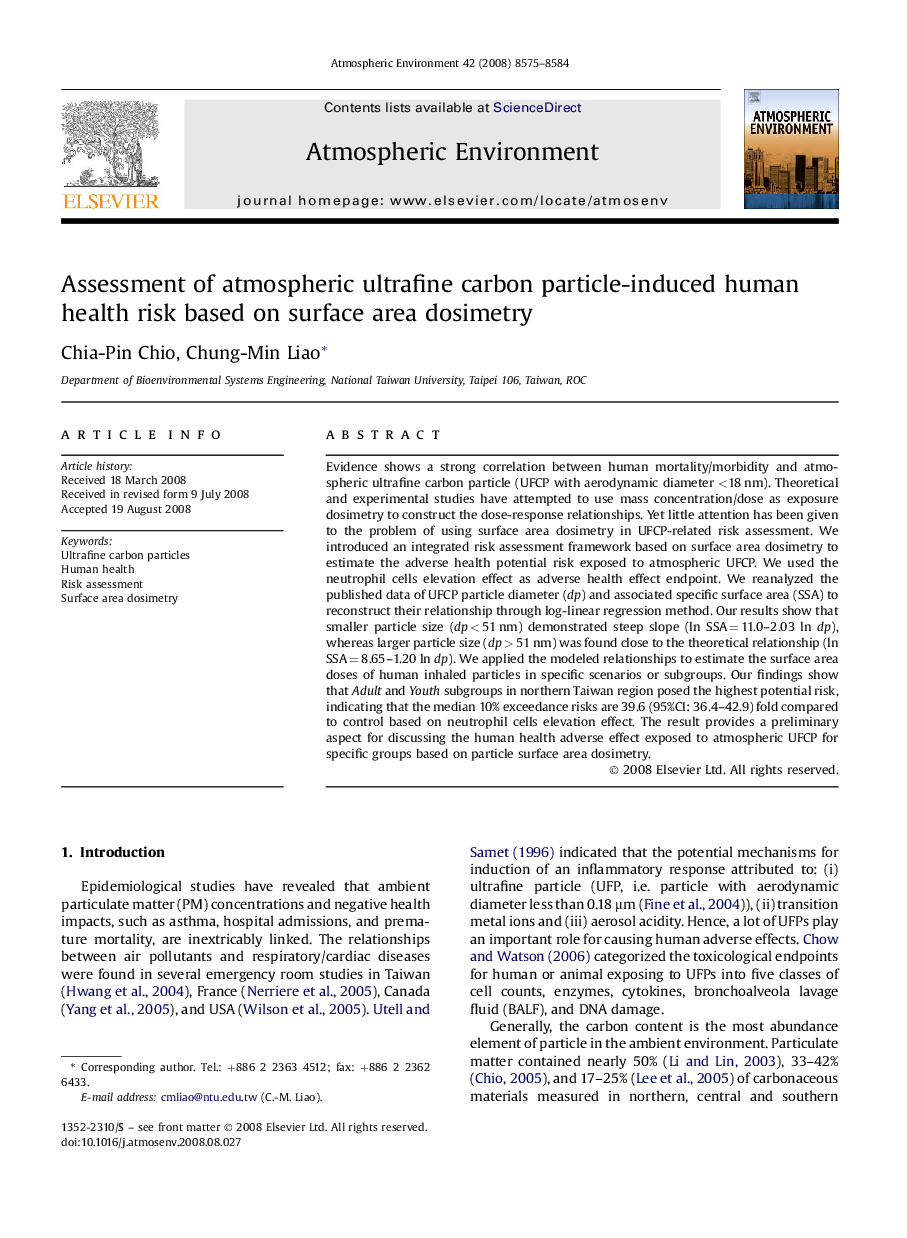| Article ID | Journal | Published Year | Pages | File Type |
|---|---|---|---|---|
| 4442069 | Atmospheric Environment | 2008 | 10 Pages |
Abstract
Evidence shows a strong correlation between human mortality/morbidity and atmospheric ultrafine carbon particle (UFCP with aerodynamic diameter <18 nm). Theoretical and experimental studies have attempted to use mass concentration/dose as exposure dosimetry to construct the dose-response relationships. Yet little attention has been given to the problem of using surface area dosimetry in UFCP-related risk assessment. We introduced an integrated risk assessment framework based on surface area dosimetry to estimate the adverse health potential risk exposed to atmospheric UFCP. We used the neutrophil cells elevation effect as adverse health effect endpoint. We reanalyzed the published data of UFCP particle diameter (dp) and associated specific surface area (SSA) to reconstruct their relationship through log-linear regression method. Our results show that smaller particle size (dp < 51 nm) demonstrated steep slope (ln SSA = 11.0-2.03 ln dp), whereas larger particle size (dp > 51 nm) was found close to the theoretical relationship (ln SSA = 8.65-1.20 ln dp). We applied the modeled relationships to estimate the surface area doses of human inhaled particles in specific scenarios or subgroups. Our findings show that Adult and Youth subgroups in northern Taiwan region posed the highest potential risk, indicating that the median 10% exceedance risks are 39.6 (95%CI: 36.4-42.9) fold compared to control based on neutrophil cells elevation effect. The result provides a preliminary aspect for discussing the human health adverse effect exposed to atmospheric UFCP for specific groups based on particle surface area dosimetry.
Keywords
Related Topics
Physical Sciences and Engineering
Earth and Planetary Sciences
Atmospheric Science
Authors
Chia-Pin Chio, Chung-Min Liao,
